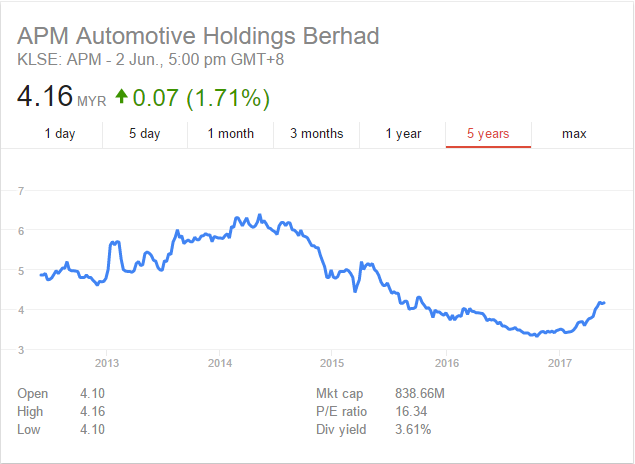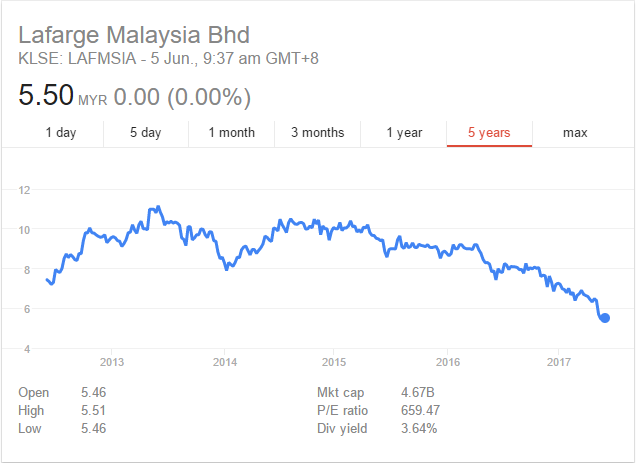Intelligent Investing
Why Sometimes You Can’t Wait for Certainty
Ricky Yeo
Publish date: Sun, 11 Jun 2017, 06:54 AM
When there are lots of uncertainty (has the market ever been certain?), the common advice is to stay on the sideline until things clear up. There is value in this wisdom but sometimes it can do more harm than good to your return.
In stocks, uncertainty can arise from macroeconomic, industry or stock specific, and most of the time, a bit of everything. We generally associate uncertainty with share price volatility. High volatility equals high uncertainty. So when a stock is down 20, 40%, it is best to avoid catching a falling knife and wait until things settle down. The 2 main reasons we do that is to avoid losing money and a downtrend stock is likely to stay that way for a while, so it’s best to allocate our capital into opportunities that are going up. But I will offer you a different perspective. You can’t wait for certainty because the bulk of the profit are made during uncertain times and we are poor at market timing, so forget about share price movement and focus on odds.
Perspective during uncertainty
|
Common Wisdom
|
Contrarian
|
|
Stay sideline – Avoid losing money
|
Asymmetrical return – Low downside high upside
|
|
Focus on uptrend opportunities
|
Poor at timing, focus on downside
|
In investing, the 2 main risks we deal with are 1) Business and 2) Price. Business risk being the decline of business performance i.e revenue and profits due to competition and so on. Whereas pricing risk comes when you overpay for a stock.
Usually when a stock is coming down, it’s because there’s a change in market expectation due to poor performance and as a result, the business risk goes up. On the other hand, falling share price act as a counterbalance by lowering pricing risk since you can buy it at a cheaper price. And sometimes, the falling share price can outruns the business risk when majority of investors succumb to fear at the rock bottom. So, if you think you are properly compensated in the form of cheaper price for bearing the business risk, the odds are in your favor to make a good return.
The reasons why most of the profits are made at the bottom is because that’s where the maximum pain point occurs. If you look at Masteel (Malaysia Steel Works), more money is made when you bought it at below 50 cents (at a lower risk) than when you get in at 80 cents (currently $1.11). There might be a hindsight bias in this example but it is the same with Affin Bank. I have zero ability in market timing but got in at $2.34 knowing I am properly compensated for buying it at half the book value despite a poor return on equity (currently $2.73). The return is asymmetrical. That is the same with APM (APM Automotive), I don’t have a clue how low APM will go but I have a high certainty that it can’t be worth less than $4, so I started buying last year at $4 all the way to $3.30. Obviously, you can’t just go out there and buy every stock that is down 50%. The key is to find out if the decline in business performance is more likely to be structural or temporary.
Going back to APM. Its share price came down from a peak of $6.40 around 3 years ago as margin get compressed due to poor consumer spending that continues to impact vehicle sales TIV (total industry volume) and auto parts manufacturer like APM. When looking at its business risk, you are likely to come to the same conclusion as me that this is temporary. APM’s revenue has barely declined, a leader in domestic auto parts industry, strong cash flow at trough, overcapitalized balance sheet position and the ability to establish $1.5 bil Islamic bonds. It is a cyclical industry and nothing is new under this uncertainty. I can be wrong with my assessment and the jury is still out there with this one. It will need more time (probably 1-2 more years) to find out.

Another more recent case is Lafarge. The stock has almost halved compared to where they were 3 years ago. The reasons for the slump mainly comes down to 1) Cement overcapacity 2) Cost increase 3) Soft property market and 4) Slow rollout in infrastructure projects. Cement production overcapacity leads to a price war and a hike in coal price increases production cost, these are supply side problems. At the same time, a soft property market and slow infrastructure project rollout on the demand side further worsen the situation. So the questions are “Is this structural or temporary?” and “Am I properly compensated at the current price for bearing the business risk?”

Of course, as the examples have shown, there’s a chance that you’ll be ‘early’ at catching a falling stock. Since I am poor in market timing so I’ll put more emphasis on minimizing my downside first before looking at the upside. And in some cases, the increase in share price actually begins way before there’s any markedly improvement in fundamentals.
Uncertainty simply means there are many unknown outcomes that can possibly happen. That’s also when opportunities for asymmetrical return are immense. If you can be sure that the odds are in your favor, such as the case where business risk is temporary instead of structural, you will be able to make a good return in the long run. Revenue is a good starting point. Find out the key drivers behind the decline and look at the past 5, 10 years reports if the company has encounter similar situation before. How they handle it and what happened after that.
If you find this helpful, share it, subscribe and learn to be a better investor.
More articles on Intelligent Investing
Discussions
11 people like this. Showing 6 of 6 comments
SERBADINAMIK would be a good example for this article - lets see how it turns out.
2017-06-11 14:39
as most investors have limited capital, just remember to factor in opportunity costs
2017-06-12 21:51



















Alex
tq
2017-06-11 14:28